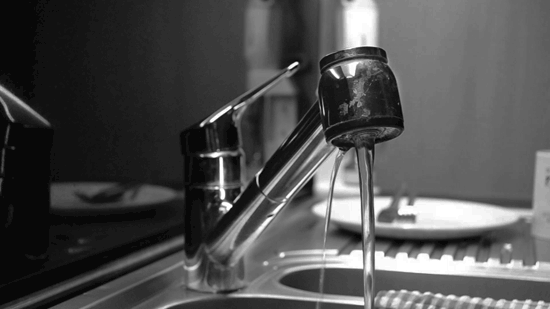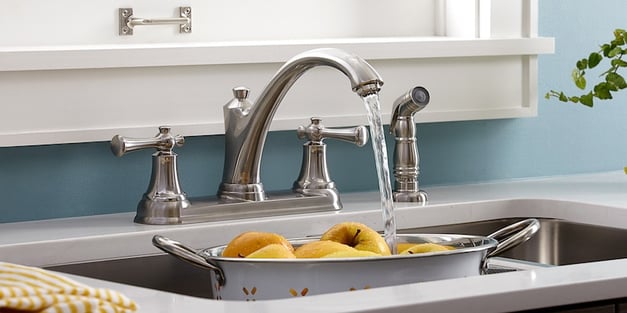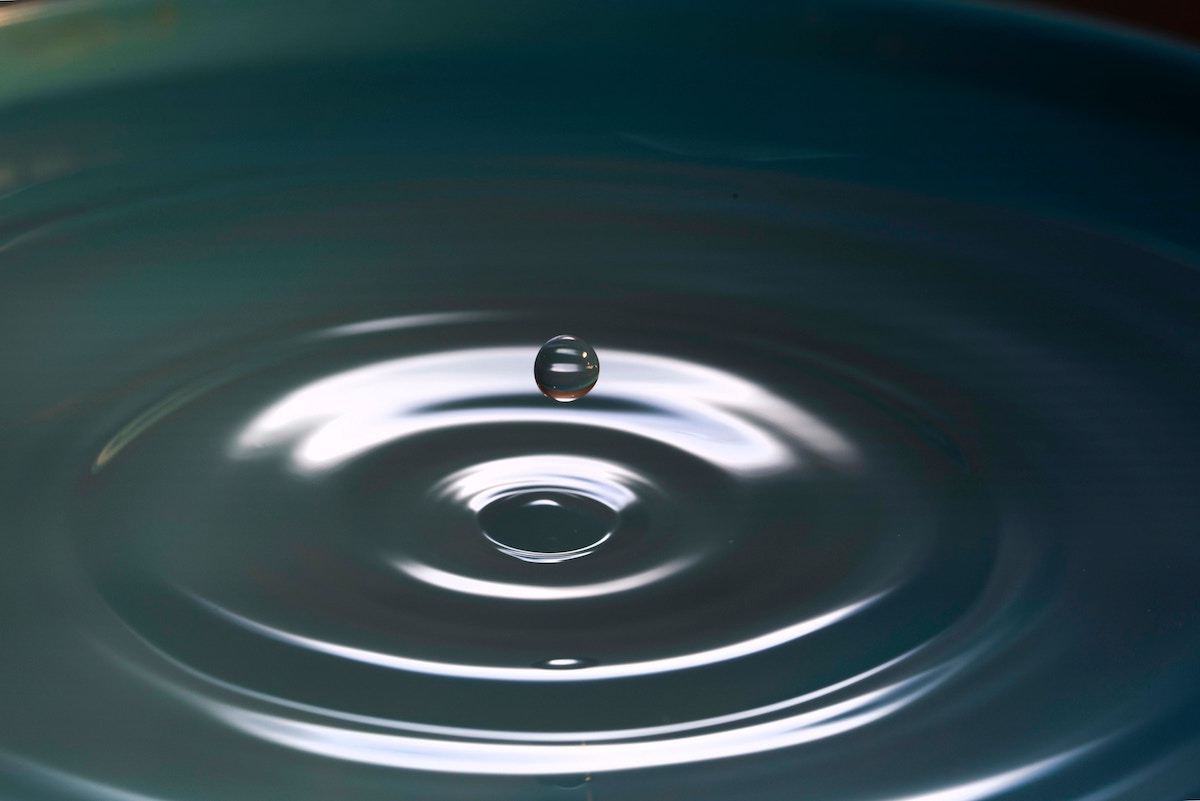Drip… drip… drip…
Hear that sound? A leaking faucet is not just an annoyance. It’s one of the many ways that you waste water every day around the house. According to McGill University, Canadians use an average of 329 litres of water every day at home, only 10 percent of which goes to drinking and cooking.
Making your house more eco-friendly doesn’t need to be a huge project. In fact, there are multiple changes you can make that take little effort on your part—just a bit of foresight. If you’re wondering how to save water at home, use this simple guide to get started improving your water conservation today.
5 Ways to Stop Wasting Water at Home

1. Check your home for leaks
Many ways to save water begin with recognizing where you are usually wasting water. When it comes to conserving water, the first step is to check your home for those pesky leaks. According to National Geographic, nearly 40 litres of water—or about 14% of a person’s indoor water use—is wasted each day due to leaks alone. And your faucets are not the only place where that liquid might be escaping. Make sure to stick your head underneath your sinks to check the pipes and look at the seals around your water heater.
Some of the leaks may not be as obvious. For example, water from your toilet tank may be escaping into bowl without any auditory or visual cues. The Regional Water Providers Consortium recommended putting a few drops of food dye in the tank–without flushing—and checking back in 15 minutes. If the water in the toilet bowl changed colour, you know that you have a leak.

2. Assess the way you use water
After you fix any leaks, it is time to assess the way you use water around the house and implement new best practices. For instance, you can increase conservation simply by using your dishwasher more efficiently. Rather than running it every night before bed or an otherwise convenience-based schedule, be sure to wait until it is full to reduce the number of loads you do each week.
The same goes for the laundry machine. Unless you have a setting for different sized loads, try to avoid running a cycle just for a couple shirts that you could easily wash by hand. If you do have different settings, make sure that you are using the correct one to conserve water.

3. Be strategic with your showers
Being strategic with your showers is another way to conserve water in your home. McGill University reported that 35 percent of water consumption in Canada goes toward bathing. Now, we're not telling you to skip showers altogether. But limiting the time you spend standing under the water is an easy way to cut down on your water consumption. Start by paying attention to the length of time you spend in the shower. Then, try to take showers that last around 5 minutes.
And instead of letting water freely flow down the drain, try collecting water in a bucket while you're waiting for the shower to heat up. When the shower water gets to your preferred temperature, put the bucket to the side and take your shower. Then, that water that would have otherwise gone down the drain is available for tasks like watering plants!

4. Turn off the tap
Water comes out of the average faucet rapidly. In fact, a tap that drips six drops a minute will lose 1,200 litres of water annually, according to Saskatchewan Watershed Authority and Global News. This equals a whopping seven bathtubs worth of water. Leaving the faucet on while doing things such as brushing your teeth or washing your hand is wasting water at home and leading to money down the drain.
To conserve water at home, turn off the tap while brushing your teeth. Shut off the faucet after you wet your brush, and don’t turn it back on until it’s time to rinse. You also don’t need the water to keep running while you’re scrubbing your hands with soap. Save water at home by turning off the tap while washing your hands.

American Standard faucet, available at Kitchen & Bath Classics
5. Replace your fixtures and appliances
While changing your habits around the house can have a significant impact on your water use, you can reduce even farther by installing eco-friendly fixtures. According to the U.S. Environmental Protection Agency, this alone could reduce water consumption by about 30 percent.
Your shower is one spot that can really benefit from this strategy. Statistics show that the average shower water consumption is 85 to 95 litres of water per shower. However, National Geographic reported that during a 10-minute shower, a low-flow shower head will save you about 57 litres of water. If you shower every day, that is a savings of more than 20,000 litres each year! Consider the small fix of replacing your current shower head with a low-flow option to make a big impact.
Your toilet and faucets are additional components of your bathroom that you can upgrade to be more efficient and eco-friendly. Low-flush toilets, high efficiency or dual model toilets can save litres of water with every flush, according to the Sustainable Sanitation and Water Management Toolbox. Low-flow faucets will also help you stop wasting water at home.
Why do we need to conserve water?
According to McGill University, Canada was the second largest consumer of water per capita out of 29 Organization for Economic Co-operation and Development (OECD) countries in 2000. Although Canada is holds one-fifth of the world’s freshwater, that doesn’t mean we don’t still need to conserve it.
As we all know, water is essential and it’s not unlimited. While water is constantly recycled naturally through the Earth’s water cycle, fresh water is a finite resource that is becoming more and more scarce. As the climate warms, lakes and rivers dry up. This means it’s important to protect and preserve water by focusing on our water usage and practicing ways to save water and help the earth.
If you’re wondering how to help the earth, begin with water conservation. Check your water usage around the house and begin to quit wasting water at home. For eco-friendly installation options, head to a Kitchen & Bath Classics showroom today. One of our consultants will be happy to help you find the perfect water-saving solution for your home.




